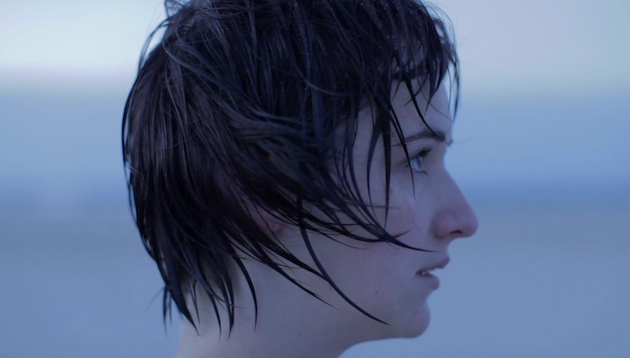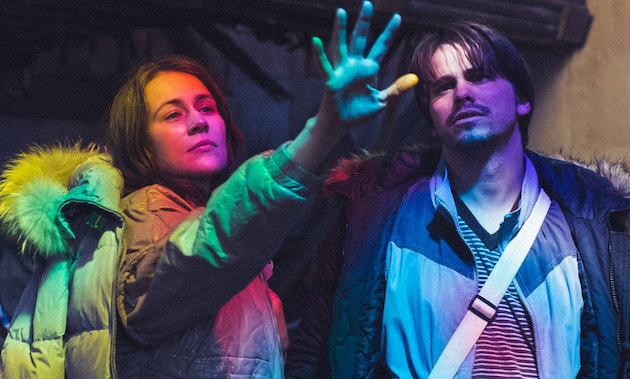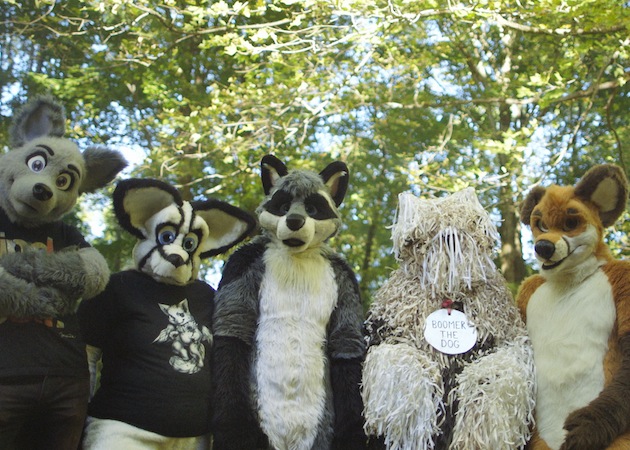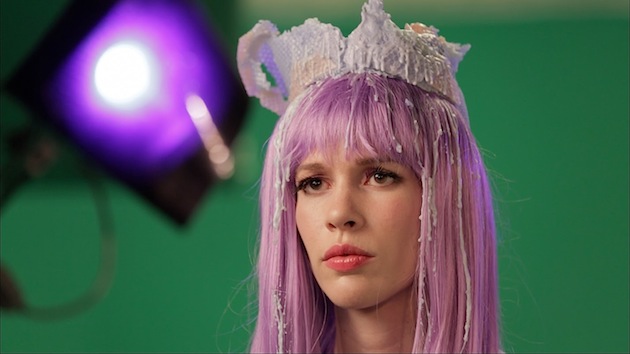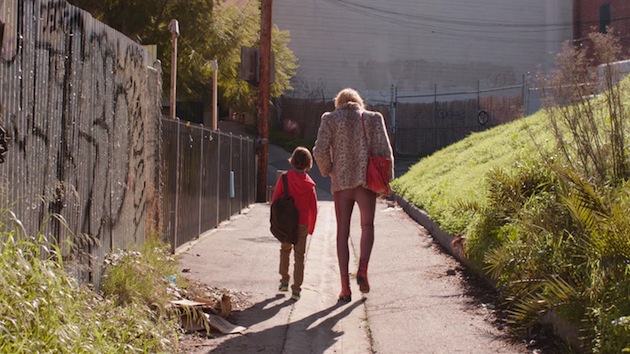Slamdance 2016 Preview: Meet The Filmmakers, Part 2
We continue today with a fresh batch of filmmaker Q&As -- read on and you just may find your new favorite cinematic upstart!






Paul Taylor, DRIFTWOOD - Narrative Competition
Tell us about your film, but not in a plot-centric way, please…
Driftwood was made as a reaction to the state of contemporary cinema. I wanted to create something that would stray from the many dialogue-driven films of my generation, something that would be made to see in a theater and not only streamed digitally. A good chunk of contemporary cinema favors excessive exposition, style over substance and convenience, all which leads to a passive audience.
Driftwood eschews many of these aforementioned techniques and instead is constructed using only what is essential. The camera moves only when necessary and the characters never speak as the film slowly unfurls, urging its audience to engage with it and ask questions.
Share with us a pivotal cinema related experience or moment from your childhood or young adulthood
I talk to a lot of filmmakers who all tell me how at a young age they were watching Bergman or Tarkovsky or Fassbinder films. It made me feel as if I did something wrong. Should I have seen a Bergman film when I was 14? I grew up watching stoner comedies, sitting in my parents basement and reveling in the seductive power of Dude, Wheres my Car?, a film that has been watched a shameful amount of times in my life. Later, as a freshman in college I was shown a Godard film and noticed how in one particular scene, instead of panning in the same direction of a character walking, he panned in the complete opposite direction, purposely disregarding such a basic element of filmmaking. At that point in time, having barely been exposed to the world outside of Hollywood cinema, I was eager to see more. From that moment on I grabbed whatever foreign cinema I could and spent many nights traveling the world through my television screen.
Why Slamdance?
Slamdance’s reason for living is for the filmmaker and their film. It isn’t for celebrity appearances, red carpets or corporate sponsors. Slamdance is one of the only festivals in North America that promotes true independent filmmaking and appreciates cinema in all of its glory. They are a festival that holds tightly to their convictions and is open to films and filmmakers of all kinds. In a circuit that has been oversaturated with promoting parties over cinema, Slamdance stands out as one of the greatest festivals for an emerging filmmaker. I couldn't be any happier to be part of it.
Your essential Park City survival kit:
Snow shoes, Tums and hugs for every single Slamdance team member.
Claire Carré, EMBERS - Closing Night Film
Tell us about your film, but not in a plot-centric way, please…
Embers uses the sci fi setting of a future where those who survived a global neurological virus are afflicted with amnesia to explore the relationship between memory and identity. Stripped of the story we tell ourselves of who we have been, and without the ability to start a fresh personal narrative by forming new memories - just acting and reacting in the moment - who would each of us be?
Share with us a pivotal cinema related experience or moment from your childhood or young adulthood
Watching Blade Runner. Over and over. When I was in elementary school my parents bought it on Laserdisc, and I've watched it at least a hundred times since. As a kid I was also really into listening to the soundtrack by Vangelis.
Why Slamdance?
I love Slamdance's DIY attitude, it's the perfect fit for our film. As the writer/director/producer/editor/costume designer of my film, I love that the Slamdance is about getting it done, making your own path, and not taking no for an answer. I traded my car for VFX. I slept on an air mattress in the wardrobe room during the shoot. Post happened mostly in my pajamas in our cabin in the woods. I love that Slamdance is run by filmmakers who have been through the thick of it before and are excited to give emerging filmmakers the benefit of their experience and a platform to be seen.
Your essential Park City survival kit:
Puffy jacket, warm socks, laptop, phone charger, enthusiasm. It's my first time going to Park City, so I'm kind of guessing!
Dominic Rodriguez, FURSONAS - Documentary Competition
Tell us about your film, but not in a plot-centric way, please…
Fursonas is my attempt to make the “definitive” furry documentary. If you haven’t heard of the furry fandom, go ahead and look it up! At first, it may seem pretty simple, but the more you search, the more you’ll find people fighting about it. The only thing furries agree on is that there is no definitive answer to what “furry” means, so this film is my messy four-year journey through the fandom, introducing as many perspectives as I can.
Share with us a pivotal cinema related experience or moment from your childhood or young adulthood
I started making dumb movies when I was 10 years old, but a huge turning point happened when I learned to use editing software in high school. It was so exciting to see how much power editing has in shaping the way people view and experience a film. I’ve been addicted to that power-high ever since!
Why Slamdance?
Slamdance is the ideal festival for Fursonas. Our film had humble beginnings, first as a senior thesis short at college, and then gradually over the years become more legitimate. There’s a punk spirit to this film that has endured over the years—we’ve always wanted to avoid making a bullshit PR piece or a sleazy expose. Slamdance emphasizes raw, real stories and that’s what this documentary is meant to be.
Your essential Park City survival kit:
I’m very lucky to have many of my crew members alongside me at this festival, who also happen to be some of my best friends. Since it’s going to be so cold in Park City, I also plan on bringing a certain warm, fluffy outfit that ought to be pretty easy to spot!
Marjorie Conrad, CHEMICAL CUT - Narrative Competition
Tell us about your film, but not in a plot-centric way, please…
Though my brief experience as a model does influence the story, Chemical Cut is not a fact-based documentary on modeling, a naturalistic cinematic diary, an indictment or a glorification of the fashion industry. More than intentions, I cared about questions. What is a “model”? What does modeling mean anyway? Is it being a "blank slate," "passive," "submissive," "voluntarily objectified"? Why do we even need models?
I was primarily interested in tackling the theme of identity, and exploring the potential of caricaturesque humor coupled with static, understated compositions to both balance and emphasize the scenes' darker aspects. Irene is repeatedly attacked by grotesque fashion stereotypes we usually take for granted, and as we continue to accompany her, these comedic outbursts gradually take on a more ominous quality within their calm frames. The city starts to feel like it is eating itself around our hapless protagonist as she traverses spaces by foot or L.A. Metro.
The only characters that seem more “well-adjusted” are Irene and her parents, but the world presented in Chemical Cut is a subjective one, seen through Irene’s wide and frightened eyes, deformed. It's a society of spectacle, a destabilizing universe full of senselessness and power dynamics. Perhaps if Irene can “make an image” out of it, it will bring her comfort.
Share with us a pivotal cinema related experience or moment from your childhood or young adulthood
The childhood memory that pops up is only a sound, but it is as familiar as my heartbeat. It's Angelo Badalamenti's Twin Peaks theme. It was like it was waiting for me at bedtime, filling the room, speaking a secret language. Instead of drifting away to sleep, I would concentrate on the song. It was as faint as a whisper yet felt so near. I couldn't stand the agony of being left out, alone in the dark. One night I finally snuck out of bed and tiptoed to my parents' bedroom. I could barely make out David Lynch's images glowing on the television screen through the slit of the door. After a few moments, my father somehow sensed that I was watching the forbidden show and turned around, anger scribbled all over his face. He quickly chased me back to bed and grounded me for a week, but that clandestine attempt was completely worth it.
Why Slamdance?
We are very excited and eternally grateful to world premiere at Slamdance. It is everything a film festival is meant to be: filmmakers who have walked through the fire actually picking films from exclusively blind submissions. It keeps its carefully selected lineup on an even keel. Above all, it prioritizes integrity and community. It's the 99%.
Your essential Park City survival kit:
The Chemical Cut gang, firecrackers, and Gatorade.
Andrea Marini, ART OF THE PRANK - Documentary Competition
Tell us about your film, but not in a plot-centric way, please…
Moving beyond the protagonist for a second, the story of Art of the Prank is really about determination and passion in doing whatever you want to do, however you want to do it! Which is, after all, what it takes to make great art that makes a strong statement.
Introducing you to Joey Skaggs is an honor for me. Once you are done watching the film you will feel like you want to know more about him. And if you are lucky enough to not already be familiar with him, this will be an amazing discovery. It will be a blast.
Share with us a pivotal cinema related experience or moment from your childhood or young adulthood
The first time I decided to direct a scene and film it, I was 15 years old. I'm not really sure why that happened, probably because of my brother's passion for films, or because it was so exciting to put all these elements together to create an elaborate piece of art (not sure if it was really art at the time).
Where I come from, a town in south Tuscany, filmmaking is not really an ordinary occupation. So, stepping out of the crowd to do something that was so challenging, definitely drove me to try to make it real.
A few years later, when I finally managed to study art, I entered into an art contest. During the event they had students competing with all kinds of art forms--drawing, painting, photography, poetry and even filmmaking. The theme of the competition was strongly related to a social issue. During the day there were people wandering around, talking to each other and looking at the student art pieces. Then when it was time to show the films, all of a sudden everybody stopped. I turned around and the room was packed, their eyes were glued to the screen, their ears wide open, silence throughout the whole screening. That day, I realized how strong a film could be, even a very short one. I actually won the first prize, and I was very proud.
Then things got more complicated. Every filmmaker knows how difficult is to transform this passion into something you can do every day. I was lucky enough to find my own way getting there, and in 2012 I was introduced to Joey Skaggs by a producer I was working with in Rome. The last three years of my life have been an amazing challenge and an opportunity to grow as a filmmaker. This film has definitely been the best learning curve I could hope for (with its ups and downs). Making a documentary is a very challenging job. Dealing with reality and trying to shape that into a story that is meaningful, fun, engaging, emotional, etc., is not easy at all. And this is what you have to deal with every day when it comes to making a documentary film.
Also, "living" with someone like Joey, and learning about his life, has been so meaningful to me. What he does is so close to storytelling that this experience personally went way beyond just making a film about him. It improved my vision on so many levels. This is reflected in the film and will be reflected in everything I do from now on, in my own way.
Why Slamdance?
I have no doubt when I say that Slamdance is truly the best film festival we could hope for. This is mainly because of its provocative and genuine nature, which is really the essence of our film, Art of the Prank!
Your essential Park City survival kit:
A warm jacket, a warm pair of shoes, a warm hat, a warm pair of gloves… Ok, being serious… My essential kit is the team behind Art of the Prank coming with me. As far as I'm concerned everything we do as filmmakers has no meaning if it can't be shared, and sharing it with at least some of the people that made it real is priceless, fun and motivating. This will make this amazing and unique experience even better.
Michael Curtis Johnson, HUNKY DORY - Narrative Competition
Tell us about your film, but not in a plot-centric way, please…
Parenthood changes your life overnight, but it doesn't change you. Much like the lead character of my film, it was a struggle for me to balance my creative ambitions with my personal obligations. There is a particular album, from a particular artist, that I'm particularly fond of. He was a new father when he wrote it and I was a new father myself when I was developing Hunky Dory. The artist in question took a more intimate singer/songwriter approach on the album while maintaining his glam rock eccentricity. I was inspired by that. Hunky Dory is a story as familiar as Charlie Chaplin's The Kid, but I believe I found a way to tell that story in my own unique way.
Share with us a pivotal cinema related experience or moment from your childhood or young adulthood
When I was a teenager, I would comb the video store looking for 80s sex romps just so I could get a flash of nudity. That's how my brother and I stumbled upon the The Last American Virgin. The first two acts of the film are exactly what I expected, but the third act culminates with one of the most unpredictable endings I had ever seen. As I got older, I found it ironic that it was so shocking because the film's twist seemed more authentic to me than the ending of most of those sex romps where (spoiler alert) the good guy gets the girl. With all the great variations of Dostoevsky's "White Nights" (Gray's Two Lovers, Bresson's Four Nights of the Dreamer, Visconti's Le Notti Bianche), The Last American Virgin is the one that has left the longest impression with me.
Why Slamdance?
Slamdance is a gift. Definitively independent. A true film festival of discovery. That is not a knock on the festival down the street. The Sundance Institute has done an incredible job of discovering talented artists, nurturing their voices and advocating for their films. Anyone would be so lucky to benefit from their support, but their festival is more of a celebration of that development process. Most of the Slamdance filmmakers I have met had to do this with only their friends, family and filmmaking teams behind them. Slamdance's blind submission process finds filmmakers like us who have been toiling in obscurity and gives us an incomparable platform for our work to be seen.
Your essential Park City survival kit:
Pictures of my daughters: they're too young to make the trip with us. It is a shame, because they're the reason I'm here. My wife: for ten straight years she's had my back and I need her here. Tomas Pais: the lead actor, co-writer and co-producer of Hunky Dory. He is the yin to my yang. He is as essential to my creative life as my family is to my personal one.

Around the Internet
Recent Posts
Leading Voices in Global Cinema
- Peter Martin, Dallas, Texas
- Managing Editor
- Andrew Mack, Toronto, Canada
- Editor, News
- Ard Vijn, Rotterdam, The Netherlands
- Editor, Europe
- Benjamin Umstead, Los Angeles, California
- Editor, U.S.
- J Hurtado, Dallas, Texas
- Editor, U.S.
- James Marsh, Hong Kong, China
- Editor, Asia
- Michele "Izzy" Galgana, New England
- Editor, U.S.
- Ryland Aldrich, Los Angeles, California
- Editor, Festivals
- Shelagh Rowan-Legg
- Editor, Canada


